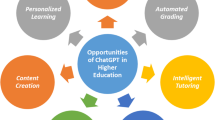Abstract
This paper addresses the issue of effective content-delivery of Computer Science subjects taking advantage of a university intranet. The proposal described herein for teaching a subject like Combinatorics and Graph Theory (CGT) is to supplement lectures with a moderated online forum against an associated intranet portal, which is referred to as a CGT-portal. The contents of a CGT-portal in a university intranet is required to be assembled by moderators and students during the progress of the CGT course. When completed at the end of a CGT course, a CGT-portal may be seen as a restricted view of the Online Encyclopaedia of Integer Sequences (OEIS: see http://oeis.org—the restriction can be with respect to sequences in OEIS that are directly relevant to say CGT). In the context of OEIS, an integer- sequence enthusiast experiences this cycle: understand a page in OEIS-ponder over the contents-read afresh/refresh related content-suggest new additions to OEIS-wait for approval or rejection– repeat this cycle. This experience can be imparted to students of a CGT course with the help of a CGT-portal. For organizing a CGT course, a first task is to partially create a miniature OEIS-like instructor-moderated CGT-portal in a university intranet. During the course of lectures and tutorials in CGT, students are asked to explore/contribute to the CGT-portal and these may be critically augmented/approved by instructors suitably, to find a place in the portal. Moderation also includes feedbacks (in many sense, a form of guidance) to students using/contributing to, the portal. By this, many concepts can be conveyed to the students in an interesting way with the desired results. It is pointed out that the dynamic nature of a CGT-portal promotes active learning philosophy, the success of which depends on understanding the background and psychology of the student population. Some design guidelines associated with the building-up of a CGT-portal e.g., grouping of prerequisites of a logical page, knowledge-representation related observations, useful interfaces to the portal are also presented.


Similar content being viewed by others
References
Andreescu, T., & Feng, Z., (2004). A path to combinatorics for undergraduates, Birkhauser.
Bollobás, B. (1998). Modern graph theory. Springer.
Chartrand, G., & Zhang, P. (2006). Introduction to graph theory, McGraw-Hill.
Ghorbani, F., & Montazer, G. A. (2015). E-learners’ personality identifying using their network behaviors. Computers in Human Behaviour, 51, 42–52.
Iyer, K. V. (2014). “A case for Intranet-based online portal for undergraduate Computer Science teaching,” Proceedings of the 5th Annual International Conference on Computer Science Education: Innovation and Technology. Singapore.
Kale, U., & Goh, D. (2014). Teaching style, ICT experience and teachers’ attitude toward teaching with Web 2.0. Education of Information Technology, 19, 41–60.
Kolloffel, B., Eysink, T. H. S., de Jong, T., & Wilhelm, P. (2009). The effects of representational formats on learning combinatorics from an interactive computer simulation. Instructional Science, 37, 503–517.
Pascarella, E.T., & Terenzini, P.T. (1991). How college affects students: Findings and insights from twenty years of research, SF:Jossey-Bass.
Perrenet, J. C. (2010). Levels of thinking in computer science: development in bachelor students’ conceptualization of Algorithms. Education and Information Technologies, 15, 87–107.
Scherer, R., & Beckmann, J.F. (2014). “The acquisition of problem-solving competance: Evidence from 41 countries that Math and Science education matters,” Large-Scale Assessments in Education 2(10).
Schuetze, H. G., & Slowey, M. (2002). Participation and exclusion: a comparative analysis of non-traditional students and lifelong learners in higher education. Higher Education, 44, 309–327.
Sloane, N.J.A. (2014). The online encyclopaedia of integer sequences. http://oeis.org.
Smith, B., & Eng, M. (2013). MOOCs: A learning journey. In S. K. S. Cheung (Ed.), ICHL 2013 (LNCS v.8038) (pp. 244–255). Berlin and Heidelberg: Springer.
Acknowledgments
The author thanks the anonymous referees for their suggestions on an earlier version of this paper.
Author information
Authors and Affiliations
Corresponding author
Rights and permissions
About this article
Cite this article
Iyer, V.K. A dynamic intranet-based online-portal support for Computer Science teaching. Educ Inf Technol 22, 827–840 (2017). https://doi.org/10.1007/s10639-015-9459-4
Published:
Issue Date:
DOI: https://doi.org/10.1007/s10639-015-9459-4




